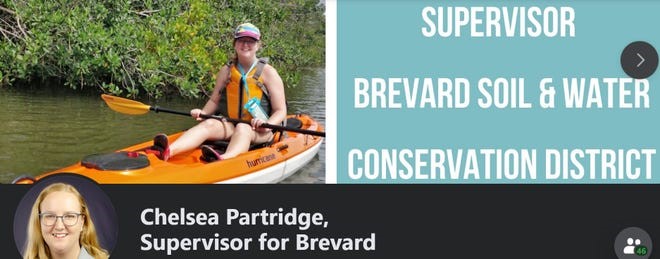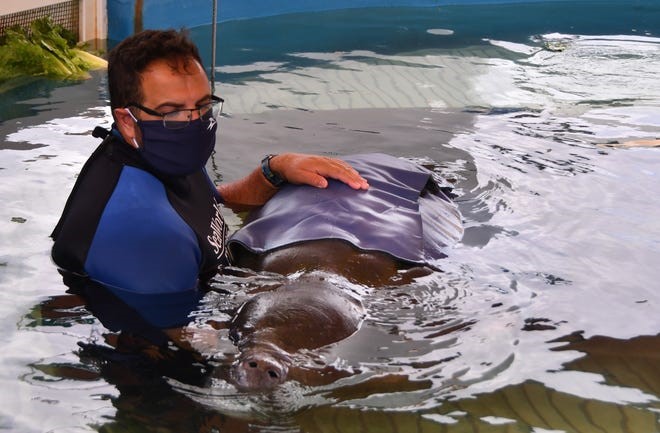Chelsea Partridge – Guest Columnist – Dec 13, 2021
Chelsea Partridge is a Brevard County Soil & Water Conservation District supervisor. She lives in Port St. John.
Municipalities and counties should be embracing and incorporating sustainability to protect our land and our homes.
The protection of our natural surroundings is becoming more and more prevalent in Brevard County –– which warrants applause and recognition.
But along with these positive changes can come fear. Fear that sustainability is anti-profit and anti-development. This is far from the truth.

Practicing environmental sustainability throughout our community can help us grow economically without sacrificing the things that make us love where we live. Let’s face it: One of the main things we love about our county is its natural beauty.
Sustainability action can help us reduce the risk posed by natural disasters that we’re no stranger to; decrease resource consumption that can raise the prices of things we need most; decrease pollution that harms us, our pets and much of the wildlife we share our surroundings with. All while bettering socio-economic conditions for everyone.
What is sustainability? Sustainability is a broad and sometimes complex concept, but at its core, sustainability is meeting the needs of the present without compromising the ability of future generations to meet their own needs. The “triple bottom line” concept is a great basework for sustainability –– instead of focusing on just profit, sustainability looks at ‘People, Profit, and Planet,’ and finding a balance between these three instead of focusing on any one alone.
For example, sustainable practices can help the Indian River Lagoon and its wildlife. Manatee deaths are of great concern and need to be addressed through broad action.
Local biologists say that seagrass loss in the Indian River Lagoon is a catalyst for starvation and malnutrition. According to the Florida Fish and Wildlife Conservation Commission, at least 841 manatees have died in Florida waters this year. Nearly 53% of those were found in one of the five counties the Indian River Lagoon runs through: Volusia, Brevard, Indian River, St. Lucie and Martin. The majority has been in Brevard, where 312 manatees have died.
Without addressing and reducing the sources of pollution, no amount of projects will reverse all historic and ongoing pollution damage. From a climate change and resilience perspective, sustainability is critical to helping us respond to increased natural disasters and decrease carbon emissions.
For example, sustainable practices can help the Indian River Lagoon and its wildlife. Manatee deaths are of great concern and need to be addressed through broad action.
Local biologists say that seagrass loss in the Indian River Lagoon is a catalyst for starvation and malnutrition. According to the Florida Fish and Wildlife Conservation Commission, at least 841 manatees have died in Florida waters this year. Nearly 53% of those were found in one of the five counties the Indian River Lagoon runs through: Volusia, Brevard, Indian River, St. Lucie and Martin. The majority has been in Brevard, where 312 manatees have died.
Without addressing and reducing the sources of pollution, no amount of projects will reverse all historic and ongoing pollution damage. From a climate change and resilience perspective, sustainability is critical to helping us respond to increased natural disasters and decrease carbon emissions.
The results of COP26, the UN’s most recent climate change conference, also showed how desperately the world needs to embrace change to meet any of our international climate goals. We need local governments to collaborate and come together and companies to recognize the importance of and embrace sustainability.
Per Brevard County’s Resilient Brevard report, “flooding, surge, and sea level rise can create catastrophic malfunctions to drainage systems; overload stormwater management and storage; cut off physical access to facilities; and create untold fiscal and personal economic impact from property losses.”
High water events from storms and rising sea levels can catastrophically impair and overload our county’s stormwater infrastructure, port operations, and Space Center operations. More than 7,100 structures in Brevard County were damaged during Hurricane Irma, and according to the Florida Office of Insurance Regulation, Brevard County had the third-highest number of claims for counties throughout the state from Hurricane Matthew.
Some of Brevard’s biggest employers are embracing sustainability. L3Harris, Northrop Grumman, Kennedy Space Center, Lockheed Martin, and Siemens all have sustainability goals and publish annual reports on their sustainable practices. NASA, Northrop Grumman, and Lockheed Martin even have employee resource groups centered on sustainability and the environment. It isn’t just the tech companies. Waste Management, FPL, and others have sustainability programs and have partnered with the Florida Institute of Technology to implement sustainability initiatives.

Why do these companies care about sustainability? An analysis performed by Deutsche Bank showed that companies with high environmental, social, and governance (ESG) ratings outperform the market in the medium and long term (medium being defined as 3-5 years and long being defined as 5-10 years). Economists from Harvard and London Business School have had similar findings; sustainability initiatives improve a company’s financial performance.

Photo by Craig Bailey, Florida Today
Sustainability boards are a great example of what is possible in sustainability and what can be accomplished by extraordinary, dedicated citizens in conjunction with local government. Brevard County has a sustainability working group, and several municipalities have sustainability boards. Sustainability boards that are empowered to lead conversations and implement change in their communities should be the goal.




